Salesforce and Cloud Computing Overview
1.Introduction
Salesforce is a leading Customer Relationship Management (CRM) platform developed by Marc Benioff and co-founded with Parker Harris, Dave Moellenhoff, and Frank Dominguez in February 1999 in California, United States. Customer relationship management (CRM) is a technology for managing all your company’s relationships and interactions with customers and potential customers. It’s a tool that helps businesses manage relationships with customers, streamline processes, and improve profitability.
2. Salesforce
Definition: Salesforce is a CRM platform designed to improve business relationships and streamline operations.
History: Founded in February 1999 in California.
Founders: Marc Benioff, Parker Harris, Dave Moellenhoff, Frank Dominguez.
3. Customer Relationship Management (CRM)
Definition: CRM is a technology for managing relationships and interactions with customers and potential customers. CRM tools can now be used to manage customer relationships across the entire customer lifecycle, spanning marketing, sales, digital commerce, and customer service interactions. A CRM solution helps you focus on your organization’s relationships with individual people — including customers, service users, colleagues, or suppliers — throughout your lifecycle with them, including finding new customers, winning their business, and providing support and additional services throughout the relationship.
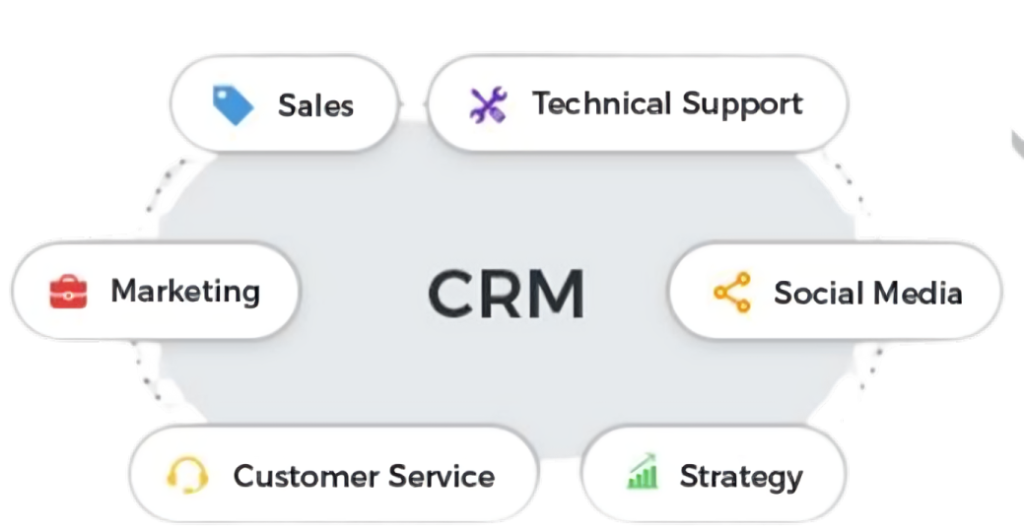
Goals: Improve business relationships, streamline processes, and enhance profitability.
CRM System: A tool for contact management, sales management, agent productivity, and more. A CRM system helps companies stay connected to customers, streamline processes, and improve profitability. When people talk about CRM, they are usually referring to a CRM system, a tool that helps with contact management, sales management, agent productivity, and more.
4. Trailhead:
Trailhead is a gamified learning platform that anyone can use to build their skills. Sign up with Google, LinkedIn, or an email account.
Or, if you’re a Salesforce customer, you can log in with your credentials. And Trailhead makes learning all about YOU.
Join Trailhead now!!
5. Cloud Computing:

History:
- The cloud symbol was used to represent the Internet till 1994
- Amazon Web Service (AWS) – 2006 (First Utility Based Cloud)
- Eucalyptus – 2008 (First open-source Cloud)
- Open Nebula – 2008 (First open-source software for deploying private and hybrid clouds)
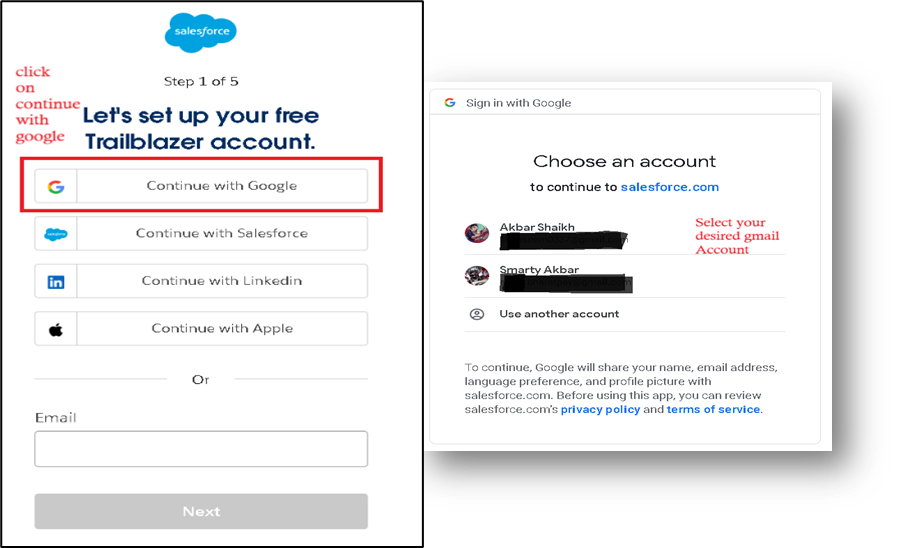
Offering 3 Types of Services:
– SAAS (Software as a Service),
– PAAS (Platform as a Service),
– IAAS (Infrastructure as a Service).

1. SAAS: – It is nothing but a readymade application or prebuilt application or already developed application which contains a set-off feature inside this. When the Customer is utilizing the Readymade Applications on Rental Basis to automate his business processes, then we can call it as
“Software As a Service”.
For example: Google Workspace, Dropbox, Salesforce, Cisco WebEx, Concur, GoToMeeting, etc.

2.
PAAS: – To develop the custom application, we need a development environment that is called a Platform. The platform is a development environment that provides a collection of services such as programming Language, Technology, Database, Tools, etc. to develop the custom application.
For example: AWS Elastic Beanstalk, Windows Azure, Heroku, Force.com, Google App Engine, Apache Stratos, and OpenShift.
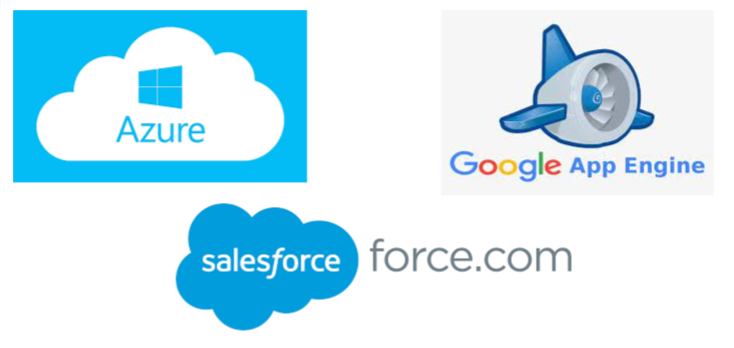
3.
IAAS: – Once the application has been developed, we need a server to install the application. So, to install the application we need a server. By using this service, we can take all the server resources on a rental basis.
For example: DigitalOcean, Linode, Rackspace, Amazon Web Services (AWS), Cisco Metacloud, Microsoft Azure, Google Compute Engine (GCE), etc.

What is Salesforce CRM?
– Web-based CRM application where user can log in using the internet connection and user ID.
– It helps to manage an organization’s interaction with customers.
– It provides a platform to develop new applications using tools and programming languages.
– It also helps to integrate with other systems. It is categorized into different tools such as platform, sales cloud, service cloud, chatter, and marketing cloud.
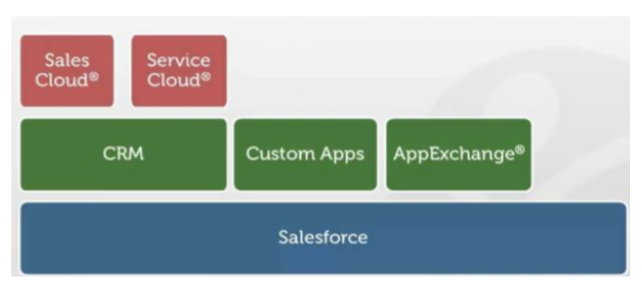
What is Sales Cloud?
This is a developed application (SaaS) existing in the Salesforce platform. This is a CRM platform and hence will have a common database and other automation features to track and manage the customer data related to sales activities such as lead follow-up, meetings, lead-to-customer conversion, etc.
This helps to:
– Sell products.
– Manage Connections.
– Close Deals.
What is Service Cloud?
This is a developed application (SaaS) existing in the Salesforce platform. This is a CRM platform and hence will have a common database and other automation features to track and manage the customer data related to support activities such as issues, fixes etc.
This helps to:
– Helps Customers to find solutions for their issues.
– Increase Productivity.
– Reduce Costs.
– Gain Visibility into Service The common use cases for Salesforce.
Includes:
– Develop new applications.
– Modify existing (developed) applications.
– Tracking business development activities of salespeople.
– Reporting on customer interactions through case management.
– Reporting on the effectiveness of marketing initiatives.
– Collaborating between employees, partners, and customers.
– Integrate with other applications Few CRM Software in the market.
– Salesforce CRM.
– Zoho CRM.
– Dynamics CRM.
– Sage CRM.
– Sugar CRM
6. Deployment Models in Cloud Computing
Deployment Models The cloud deployment model identifies the specific type of cloud environment based on ownership, scale, and access, as well as the cloud’s nature and purpose. The location of the servers you’re utilizing and who controls them are defined by a cloud deployment model. It specifies how your cloud infrastructure will look, what you can change, and whether you will be given services or will have to create everything yourself. Relationships between the infrastructure and your users are also defined by cloud deployment types.
Different types of cloud computing deployment models are:
Public Cloud:
A cloud environment with shared resources, owned and operated by a third-party provider, accessible over the Internet.
Private Cloud:
A cloud environment is dedicated to a single organization, providing greater control and privacy.
Hybrid Cloud:
A combination of public and private clouds for more flexibility.
Community Cloud:
Shared cloud infrastructure among several organizations with common. interests.
Multi-cloud:
Use of multiple cloud services from different providers.
7. Salesforce Sandbox
A copy of your Salesforce database used for testing new ideas and functionalities. Oftentimes, when you work with a consultant on new functionality for your database they will build and demonstrate it for you in a sandbox before it becomes part of your actual database. Below are the different types of Salesforce Sandboxes.
Types: Different types of Salesforce Sandboxes, such as Developer, Developer Pro, Partial, Full, and more.
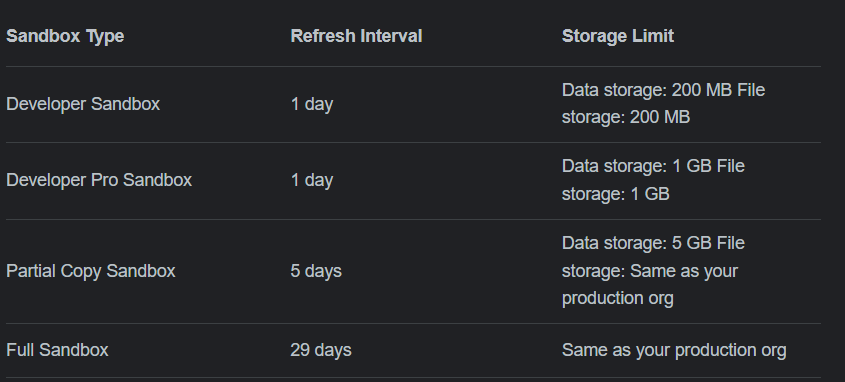

Today’s Tasks:
1. Set up a Salesforce developer account.
2. Set up a Trailhead account.
3. Navigate to the Salesforce org.
4. Explore the Trailhead platform in detail.
5. Create a Salesforce app named “School.”


